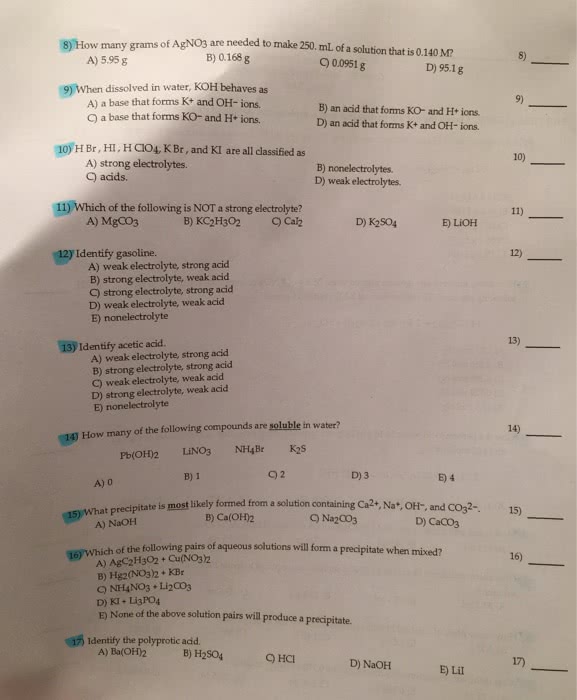CHM300 Study Guide - Midterm Guide: Strong Electrolyte, Ferromagnetism, Ionic Compound
Document Summary
H2o: nonpolar molecules: molecules which have relatively equal charge throughout, are water-insoluble at room temperature, e. g. O2: miscible liquids: two liquids which dissolve in each other in any proportion, e. g. Immiscible liquids: two liquids which do not dissolve appreciably in each other: e. g. London forces: temporary attractions between the positive and negative ends of temporary induced dipoles: e. g. Br2 and i2 have strong london forces with other atoms of the same molecule: hydrogen bonding: the attraction of a hydrogen atom in a molecule and another atom, e. g. H2o, hf, and nh3: dipole-dipole bonding: the attraction between permanent dipoles of adjacent polar molecules or two polar groups within a large molecule, e. g. Br atoms attract other cl atoms within a sample of brcl: buffer solution: an aqueous solution which maintains a nearly constant ph when small amounts of base or acid are introduced, e. g.

